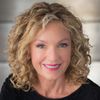
October 20 was World Osteoporosis Day: the perfect day to show your bones a little love by assessing what you eat, how (or if) you move your body, and what your risk factors are for getting osteoporosis, especially if you're over 50. And it wouldn't hurt to get a little more educated about one of the more common and preventable diseases around.
According to the National Osteoporosis Foundation, osteoporosis is a very serious bone disease that doesn't happen in a day, but can sneak up on you after percolating over a period of time, especially if you've been ignoring the health of your bones. The key to beating osteoporosis is doing a few simple things that will keep your bones strong: eat calcium-rich foods, get an adequate amount of Vitamin D (always get your Vitamin D levels checked at your annual physical exams), and do strength-training exercises several times a week. The earlier you start to take action, the better your chances of keeping your bones strong.
Here are a few startling statistics from the National Osteoporosis Foundation:
- Over 44 million Americans have low bone density and osteoporosis.
- About 10 million Americans have osteoporosis.
- About 34 million are at risk for the disease.
- Estimates suggest that about half of all women older than 50, and up to one in four men, will break a bone because of osteoporosis.
- Broken bones in people over the age of 50 can be the first sign of low bone density or osteoporosis.
- 20 percent of seniors who break a hip die within one year.
- By 2025, experts predict that osteoporosis will be responsible for approximately three million fractures and 25.3 billion in costs each year.
The National Bone Heath Alliance (of which the NOF is a founding partner) is helping to to spread this very disconcerting message -- Every year, two million bone breaks occur that are no accident, but signs of osteoporosis -- with the 2Million2Many campaign. They are touring around the country with a "cast mountain" to represent the 5,500 bone breaks that occur every year due to osteoporosis. Yet only 2 in 10 bone breaks get a follow-up test or treatment for osteoporosis. The NBHA and NOF, in partnership with government agencies and the private sector, are on a mission to see these statistics change. Here's a short video about the tour:
Every one of us is at risk for getting osteoporosis simply because we're aging. Why? When we're young, we build bone mass faster than we lose it. But as we get older, especially if we've gone through menopause and estrogen levels decrease, the reverse is true: we start to lose bone density. And the weaker our bones are the more likely we are to break a bone if we fall.
What to do?
The National Osteoporosis Foundation is on a mission to convince Americans to:
- talk about it
- learn about it
- do something about it
To kick off World Osteoporosis Day, the National Osteoporosis Foundation invites you to share your story (or the story of a loved one) about your experience with osteopenia or osteoporosis, or what you're doing to prevent it, as a positive step toward spreading the message so we take ownership of our own health. The goal is to make the "Share Your Story" go viral!
Got a story to share? Email it to generationsofstrength@nof.org or share it on the National Osteoporosis Foundation Facebook page.
I had the opportunity to tell my own story when the National Osteoporosis Foundation honored me with the "Generations of Strength" Award at their annual luncheon last month. Here's a snippet:
When I was 47 my doctor sent me for my first DEXA test because I was perimenopausal and he wanted a baseline. At the time of the test, I was pretending to work out by joining an expensive gym and never going, and that was about it. I was still an Atkins-style eater -- low carbs, very few fruits and veggies, lots of meat and very little calcium. Supplements? None. Vitamin D? Nope. I was still in that delicious "I'm invincible" mode. Remember that?
When my doctor sat me down to review the results of first bone density test he told me that my numbers were closer to the "borderline" than he was comfortable with, and I needed to take specific actions -- immediately -- if I was going to keep them from going down that slippery slope toward the big "O." Strict orders were given: More calcium-rich foods, 1,500 IU of Vitamin D and strength training every day. Uh-huh, I said. Will do.But didn't.
I stayed with my own program -- which was doing nothing -- because I was convinced I knew better. Like all of you, I was busy with work, kids, friends and life. Who had time to think about it? I wasn't yet 50, and had gotten so used to excellent health my entire life (with not a single broken or fractured bone, not even a small toe) that I couldn't imagine my bones would actually start to work against me.
Big mistake.
When I turned 50 I made an appointment to get my second DEXA test.
Here's what the report said: Osteopenia. There it was right on the report, in black print on white paper. Osteopenia.I didn't feel so very invincible at that moment.
Osteopenia is like the first stop on a train. In a few more stops you're at osteoporosis. And just having osteopenia means you're more apt to actually fracture a bone if you fall. In the few years since my last DEXA, I had done NOTHING at all to prevent this train from chugging down the tracks. The numbers were just slightly below the normal line and not in all areas, but the facts were clear -- in four years I had lost a measurable amount of bone density. A trend had been established, and now the time had come to do everything I could to head off a train wreck.
With my new resolve to get strong and fit for life, I went to the best experts to tell me what to do and how to do it. My goal was to create a program that included cardio to strengthen my heart, lungs and lower body, burn fat and lose (and then maintain) weight; strength-training to build muscle mass and bone density and more activity throughout the week to keep my energy levels up and everything feeling (and looking!) good.
A few years went by and last year, at the age of 55, I had my third DEXA test. Result? All the areas that had been labeled "osteopenic" had improved and were in the "normal" range, while those that had been "normal" stayed right where they were. Good news for me, because a few weeks later, I ran the New York City Marathon! There's no way I could have accomplished that feat four years earlier before I started to take charge of my health.
Now, I eat well, take Vitamin D, run (with walk breaks), and do push-ups and other weight-bearing exercises to keep my bones -- and the muscles that support them -- healthy and strong.
My journey so far has taught me an incredibly valuable lesson, which I'd like to share with you here:
We can't control getting older... but we CAN control how we do it.
Here's a short video showing how to do a push-up (for those of us who haven't done them since high school!):
For more tips on living your best life after 50 visit www.bestofeverythingafter50.com. Staying connected is a powerful tool! Keep me posted on how you're doing by subscribing to me on Facebook and "tweeting" me on Twitter at @BGrufferman. Check out my weekly columns on AARP and FOF, too.
